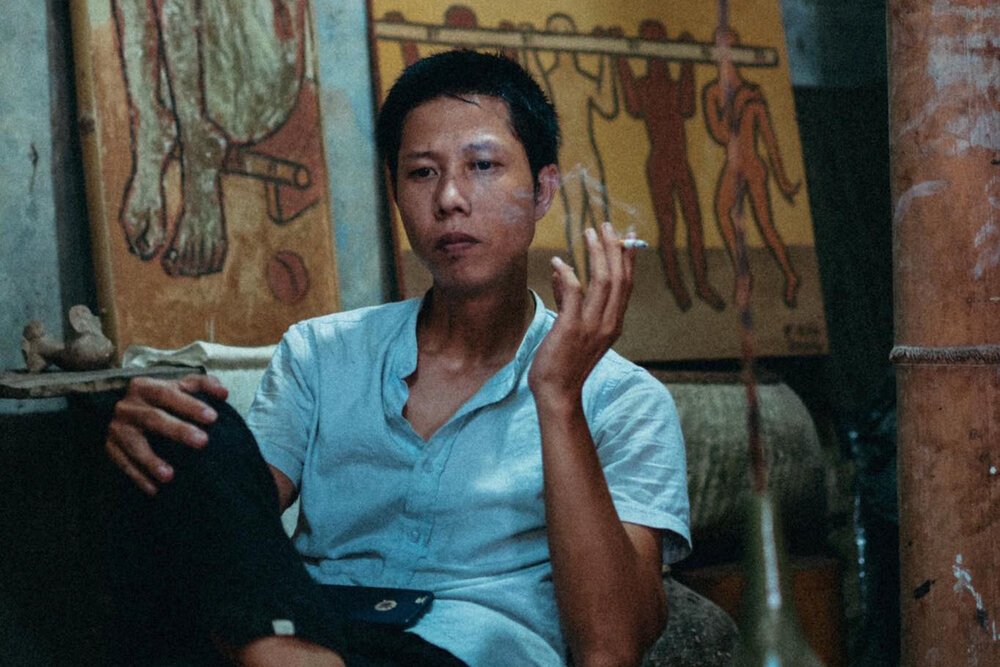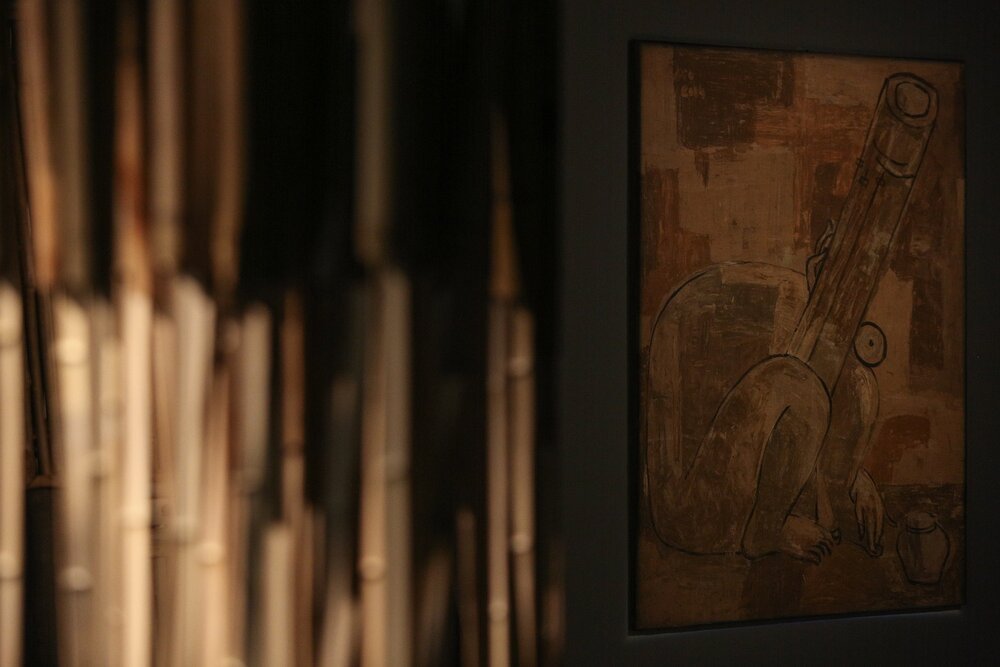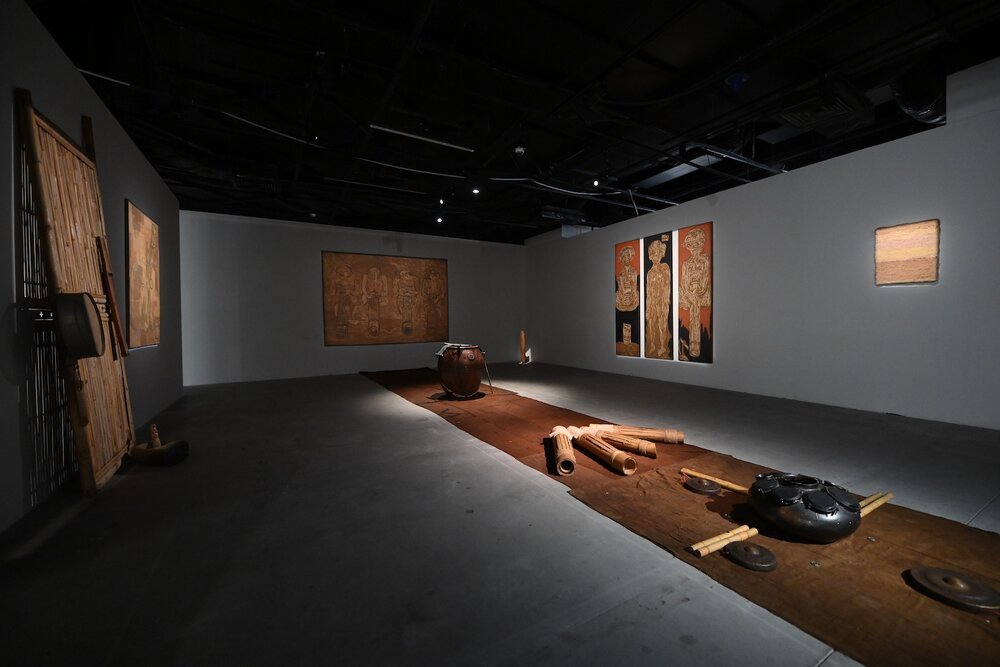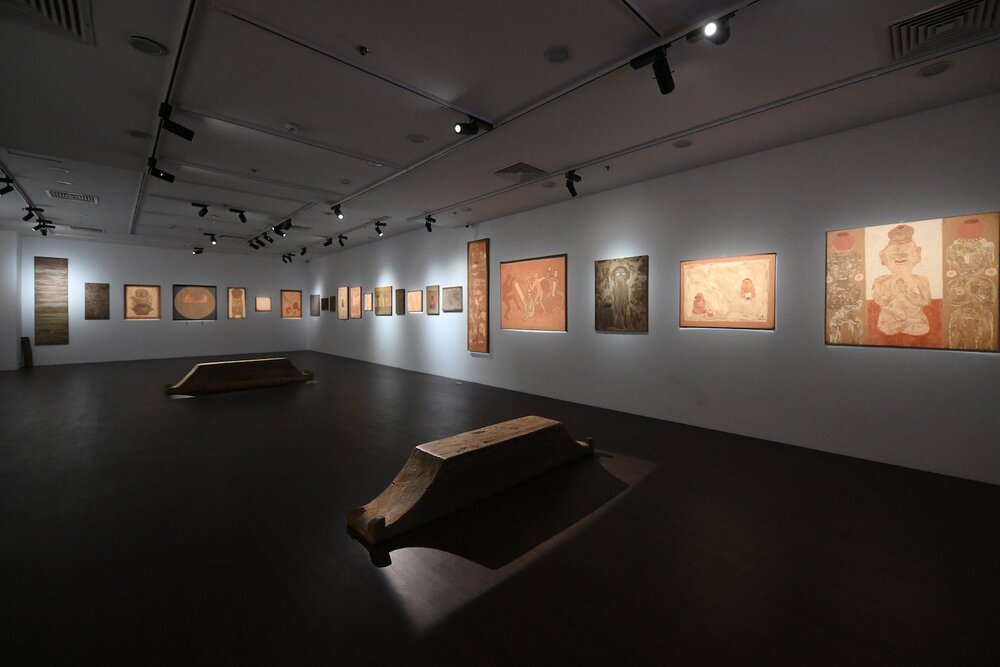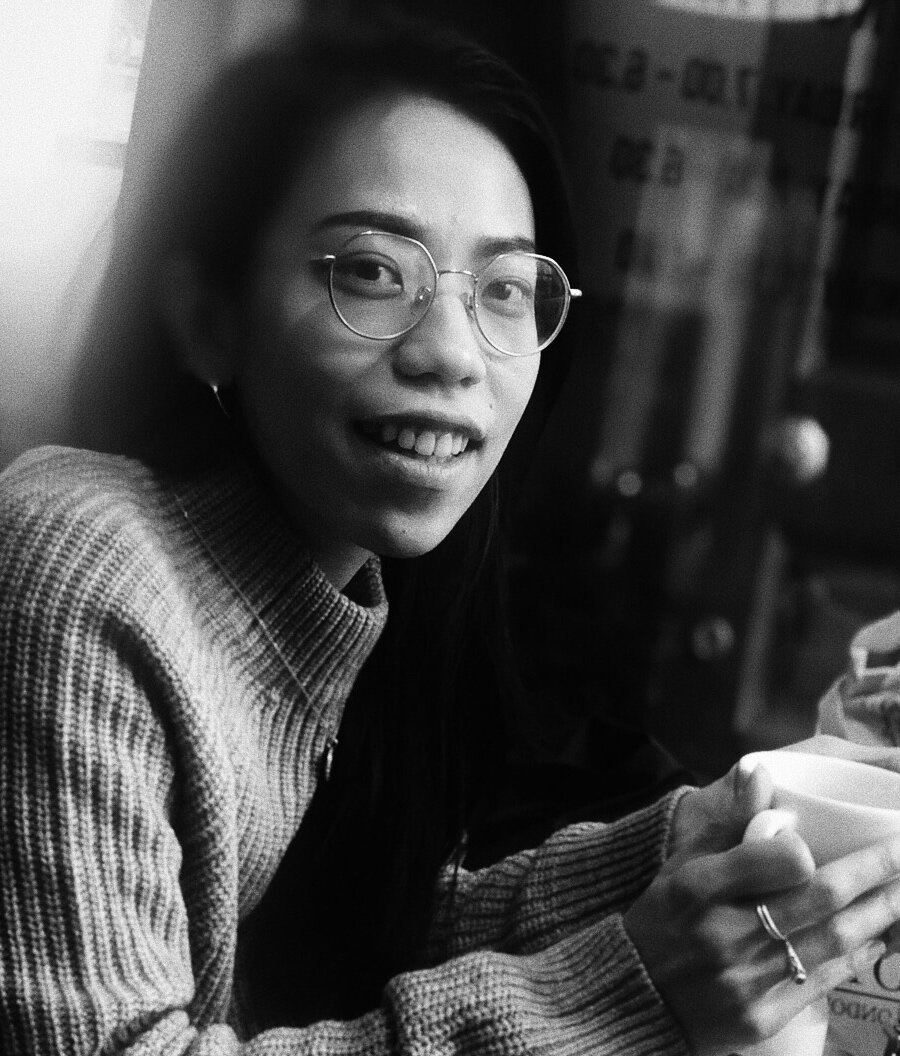Review of ‘Where there is there — there is here’: Dirt, Bamboo, and Human Hands
Nguyen Duc Phuong and Đàn Đó at the Vincom Centre for Contemporary Art
By Duong Nguyen
Nguyen Duc Phuong, 2020 at ‘Lồ’ studio, Hanoi. Image courtesy of the artist.
Nguyen Duc Phuong remembers a time in 2012, when he would swim in Hanoi’s Red River, drawing pictures on the cliffs, and picking up dirt to take home and sketch with. Later, that period would inspire the first visualisations of the group known as Đàn Đó, who, together with Phuong, are creating art inspired by music and sounds in their new exhibition ‘Where there is there — there is here (Đó là ở đâu — Đó là ở đây)’.
Đàn Đó, a group of four circus performers, first came together in 2009, during a play called ‘My Village’. Once the group returned home from their final tour of Europe in 2012, they decided to build a factory out in Gia Lam, on the outskirts of Hanoi. This has become a space for exploration for the group, as well as a place to research and develop unique and original musical instruments, using bamboo, a common Southeast Asian material.
This is where Phuong comes in. As a painter, rather than a musician, Phuong became the group’s fifth member and illustrative scribe. He began to use the new techniques he had developed in muggy days swimming in the Red River to capture the group with lines, shades and textures. His goal was not to describe and record the group through realism, but to replicate the open-minded, innocent, and witty spirit of Đàn Đó.
As he watched, he imagined a range of acrobatics, circus acts, and performances. “For eight years I sat in Đàn Đó’s factory, perceiving their tranquil melodies with my eyes, rather than my ears,” said Phuong. “I looked for inspiration in what they did, as well as what they played.”
View of ‘Where there is there – there is here’, 2020 at Vincom Centre for Contemporary Art (VCCA), Hanoi. Image courtesy of VCCA.
He drew thousands of sketches, starting with plain white paper, then moving to traditional Vietnamese ‘Do’ paper, where flourishes of ink created a sense of movement. He experimented with oil, lacquer, and acrylic, but found these tools all lacked the sensation that Đàn Đó gave him when he listened to their music.“ Đàn Đó mostly works on the stage, and there is a focus on movement in their performances,” explained Phuong. “I couldn’t aim for realism, as it wouldn’t match their show. Instead, I wanted to create a feeling of folk art in an attempt to capture their spirit.”
Searching for the correct medium for his collaborative art, Phuong turned to dirt from the riverbank. When residents of the Red River dug into the earth to plant their trees, Phuong would come along and gather up the dirt to turn into paint for his canvases. The colour was at once inspiring, beautiful and brutal, but would begin to peel off and fade over time.
Remembering his art education from school, Phuong began to crush the dirt into dust until it was almost like pigment. He took his new compound and mixed it with adhesives to retain the colour on the canvas. Then, having tested it with various binders to avoid cracking, he began painting with his new, diverse, completely natural paint. As Phuong began to develop this technique, he decided to venture across Vietnam to understand how similar materials are used in different communities.
View of ‘Where there is there – there is here’, 2020 at VCCA, Hanoi. Image courtesy of VCCA.
By travelling across the country to conduct research, Phuong found that dirt became indicative of people and places. In the mountains of Tuyen Quang, he came across priests of the Tay ethnic group who also use dirt to draw pictures of rituals on paper. The priests explained that types of glue could be made from tree sap. Back home, he used what he had learned to mix resin with his paints and create his current material. Each work of art became an experiment, where the main materials stayed the same, but small ingredients would change, to create different shades and textures. Phuong finally ended up with the collection of 56 paintings that are on show in Đàn Đó’s exhibition at VCCA.
Nguyen Duc Phuong, ‘Đàn Đó 52’, 2016, soil pigment on canvas, 62 x 48cm. Image courtesy of the artist.
Phuong’s paintings are the result of many years of hard work, ever since he discovered that dirt could be used as a source of colour. When looking through his body of work, it is easy to see different styles, moving from pieces of work from 2012, with a dark matte texture and monotones to ‘Đàn Đó 52’ created three years later, where reds and yellows jump from the canvas through considered brush strokes. There are three main types of dirt used in the painting: alluvial, clay and powdered dirt, including mineral rock, as well as a special black colour that is made from burned dried bamboo leaves.
View of ‘Where there is there – there is here’, 2020 at VCCA, Hanoi. Image courtesy of VCCA.
The works reflect the literally down-to-earth process that birthed them. Truong Uyen Ly, director of Hanoi Grapevine, a contemporary art and culture publication in Hanoi, explains that the atmosphere of this exhibition is one of the most relaxed she’s been to for a long time. “It’s rustic and simple — qualities that are very rare for artists nowadays,” she says. “Recent exhibitions seem to force viewers to think too much”.
Do Tuong Linh, an independent researcher, curator, and director of Six Space, an experimental art space in Hanoi, shared this sentiment. “Phuong’s paintings make me feel a certain closeness to folklore in Vietnam.” However, she found that while the exhibition itself was enjoyable, VCCA’s clean, almost too perfect atmosphere may not be the right space for it. “The exhibition is carefully and professionally presented, though it somewhat blurs Phuong's humorous personality,” explained Linh. “Perhaps Phuong’s art works have to be played directly into the exhibition space. For example, his studio ‘Lồ’ is a space that has a certain characteristic roughness and could activate and bring life to his works.
“… it is not trying to encapsulate grand ideas, but focuses, instead, on the personalities of a single group of performers, using simple, natural materials, to bring people together through paintings and music.”
I visited the exhibition as an artist in the group’s residence. For me, it is not trying to encapsulate grand ideas, but focuses, instead, on the personalities of a single group of performers, using simple, natural materials, to bring people together through paintings and music. This culmination of ten years of research gives me a different perspective about what I am personally trying to achieve. As a young artist still striving to find my medium, I am constantly thinking of new ideas and forms. But as Phuong has said, “Life has many directions, all of which are good, but only choose one and all you need is to go to the end with it." Working with the artist, I now realise the importance of focusing on a single medium, with pure dedication.
‘Where there is there – there is here (Đó là ở đâu – Đó là ở đây)’ is on view from 18 September to 18 October 2020, at Vincom Center for Contemporary Art (VCCA).
About the Writer
Duong Nguyen is an artist based in Hanoi. Currently, she works as a specialist and lecturer at Hanoi Academy of Theatre and Cinema. Duong has been featured in multiple group exhibitions in Hanoi, Ho Chi Minh City and Nha Trang.

